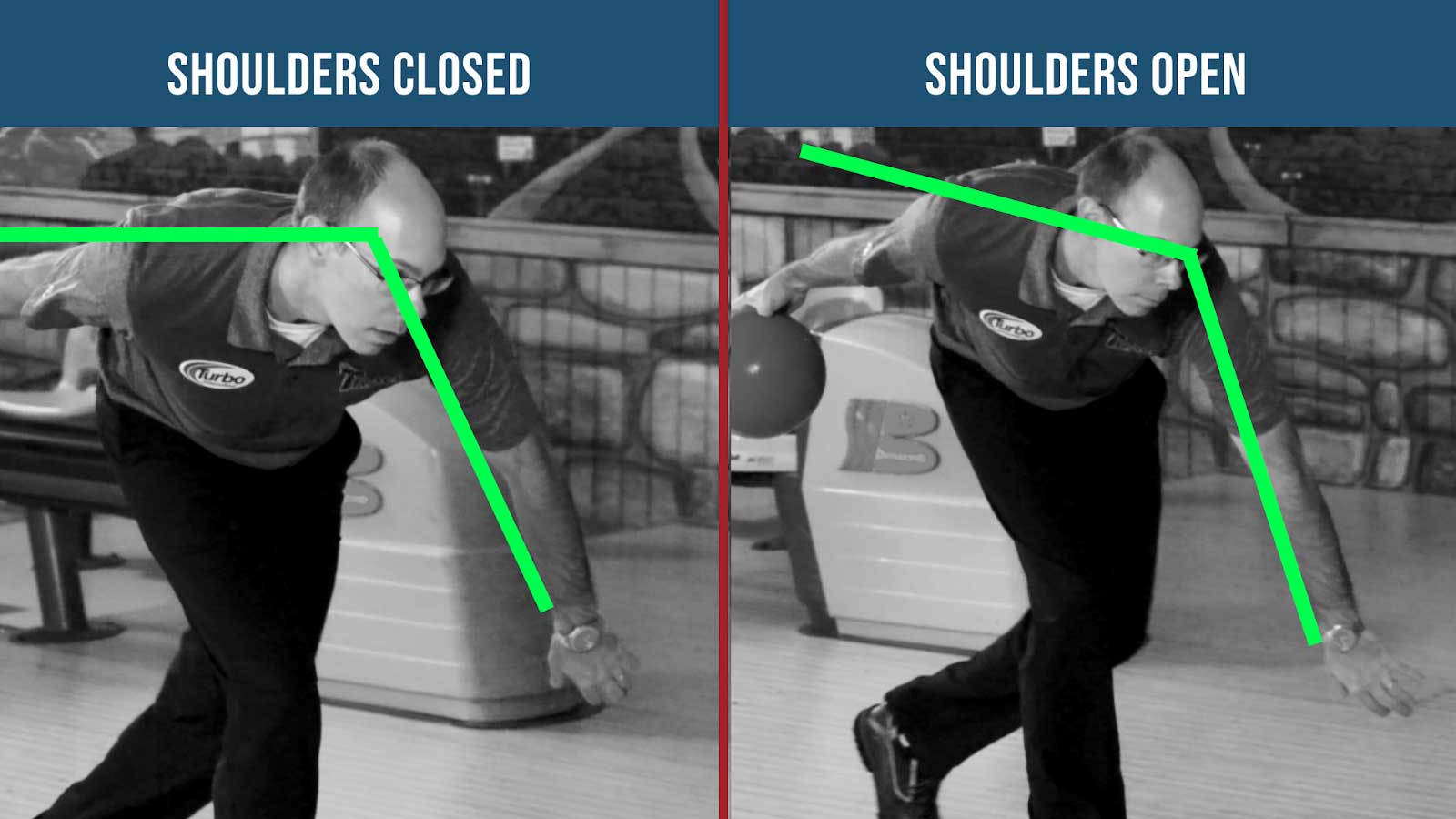Math
Starting with the example above, let’s do some subtraction. 17 (arrows) – 9 (breakpoint) = 8 boards Next, take the target arrow and add the difference. 17 (arrows) + 8 (boards) = 25 board for the laydownLaydown
In order to determine how to lay down the bowling ball on board 25, you will need to know the difference between your slide foot ankle and the bowling ball at the point of your release.
This part of the alignment system will be unique to each individual bowler.
Regardless of your rev rate and ball speed, this math will create the shape of the shot you are looking for.
Errant Shots
You can hit at the arrows and miss at the breakpoint; it happens all the time. The question is why?Sliding farther right alters the shape of the shot and will miss the breakpoint inside.
Sliding farther left can still result in hitting at the arrows, but your ball will miss right of the breakpoint.
Bowlers often are good at the arrows and miss at the breakpoint. A common misconception is that the lane is to blame.
With the equation above, you can now tell if it’s the lane or if it’s your execution. Knowing this information, you can adjust accordingly.
Launch Angles
How you set up in the stance influences your launch angle.When playing straighter angles, your shoulders should be straighter and angled towards your target.
Your non-bowling arm is your aiming bar. If you are trying to play straighter, it should be to your side—the lower, the better—with your thumb facing down towards the lane.

The thumb facing down will keep that arm from flailing up.
When opening up the lane, you’ll need your shoulders to be more open-facing towards the target.
Position your non-bowling arm in front, held low with your thumb down, and you will achieve your desired launch angle.
Axis Rotation
Hand position and ball speed are the finishing touches to this system.A normal release is somewhere between 30º to 60º of axis rotation.
Straighter angles require less axis rotation than your natural release, and you’ll need more axis rotation when opening up the lane.

Check out our lane play library for more expert instruction that will improve your bowling average.
I'm a wheelchair bowler. I understand your concept for stand up bowlers and agree whole heartedly for the stand up bowler. My question is this? What board do I put my right front castor on at the foul line in order to set the ball down on the 25 board at the foul line? Would I incorporate the rule of 7 here and place the right castor on the 32 board? I am thinking that might be a good starting point and may need to adjust a couple boards further left in order to compensate for the rear wheel that sticks out further right than the castor. Please let me know your thoughts on this and I am willing to try whatever you suggest. Thanks!
Do not slide
Like the input. Hopefully tomorrow night this will help
do two hand on the ball
Very interested